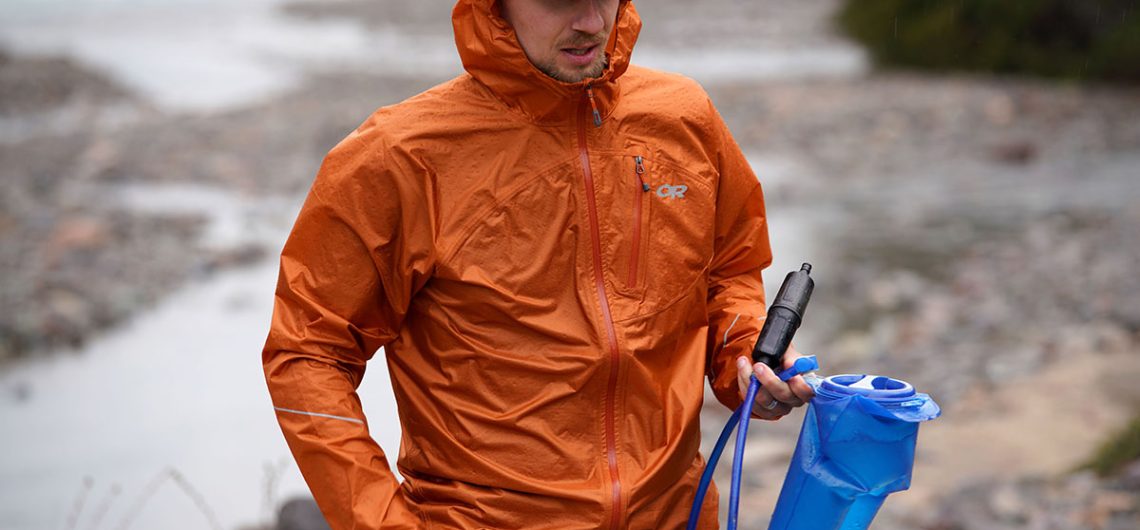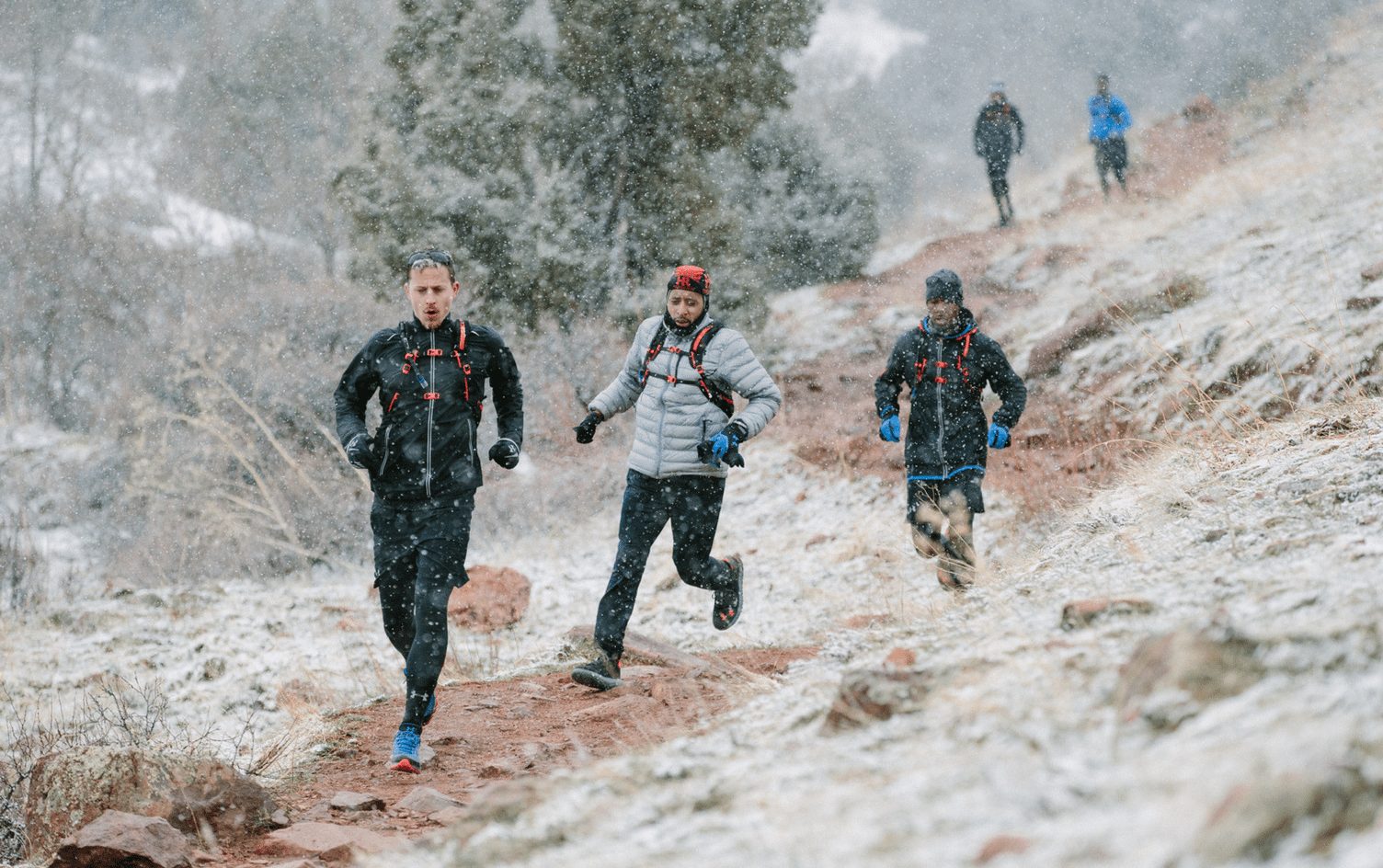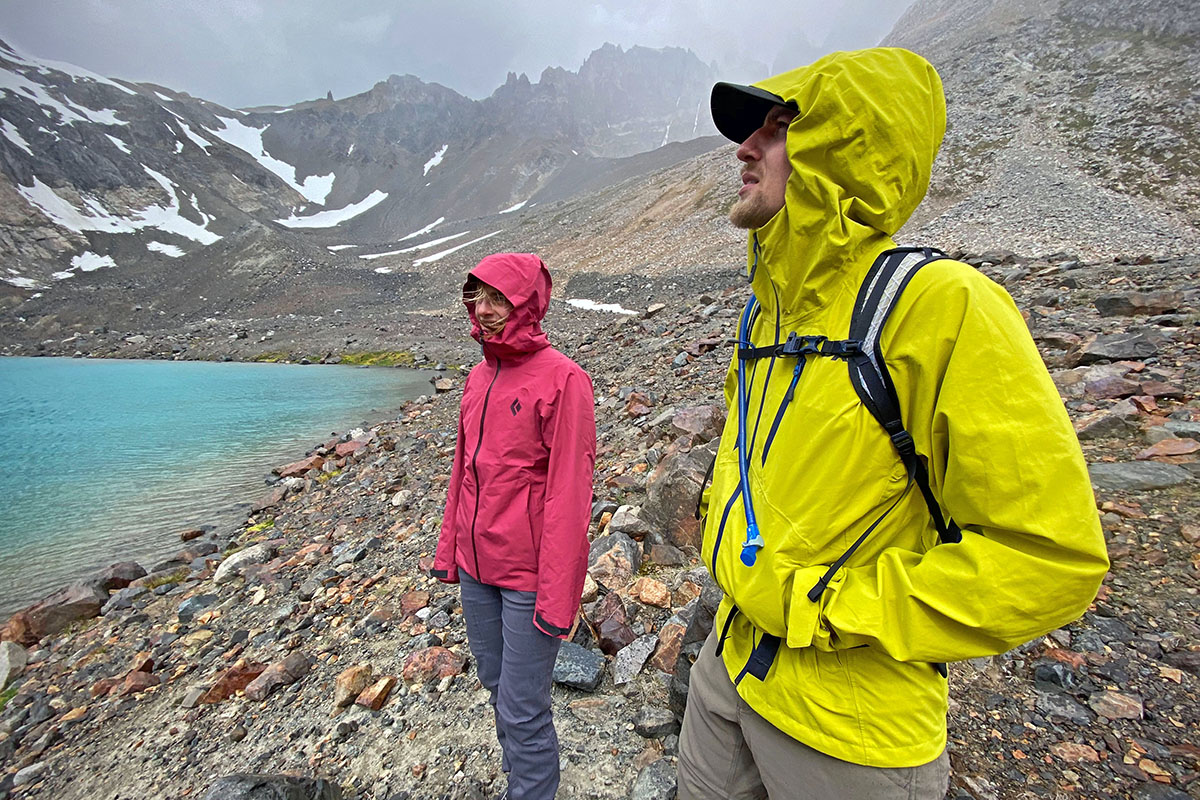Rain gear is not just a convenience but a necessity when climbing Mount Kilimanjaro. It plays a critical role in ensuring your safety, comfort, and overall enjoyment throughout the trek. Investing in high-quality rain gear and being prepared for Kilimanjaro’s unpredictable weather will greatly enhance your experience and increase your chances of successfully reaching the summit. The weather conditions atop Kilimanjaro are notoriously unpredictable, making it essential to prepare for rain regardless of the timing of your climb. Being well-versed in techniques for staying dry during inclement weather is not just advantageous but imperative. This pertains not only to your comfort but also to your safety.
Rain gear holds significant importance when trekking on Mount Kilimanjaro, Mount Kenya, Mount Meru and Rwenzori due to the unique and challenging weather conditions encountered at varying altitudes. Here’s why having proper rain gear is crucial for a successful and comfortable Kilimanjaro trek:
- Protection from Rain: Kilimanjaro’s weather can change rapidly, and rain is common, especially in the lower altitudes and rainforest zones. Rain gear, including a waterproof jacket and pants, shields you from getting wet, which can lead to discomfort, cold, and potential health risks.
- Prevention of Hypothermia: Wet clothing can cause body heat to be lost quickly, increasing the risk of hypothermia, even in relatively warm temperatures. Rain gear helps maintain your core body temperature and reduces the chances of hypothermia, a serious concern on high-altitude treks.
- Maintaining Comfort: Being wet while trekking can lead to chafing, blisters, and irritation. Quality rain gear keeps you dry and comfortable, allowing you to focus on the experience and the breathtaking landscapes rather than discomfort.
- Preservation of Gear: Rain can damage sensitive equipment like cameras, electronics, and other essentials you carry. Using waterproof backpack covers and dry bags for gear protection ensures that your belongings remain functional and intact.
- Preventing Wet Clothing: Wet clothing can add unnecessary weight and reduce the insulating properties of your clothing layers. Rain gear prevents your base layers from becoming damp, helping to keep you warm and comfortable throughout the trek.
- Enhancing Safety: Trekking in wet conditions without proper rain gear can increase the risk of slips, falls, and accidents due to slippery surfaces. Rain jackets with hoods provide better visibility and keep rain off your face, reducing the chances of accidents.
- Boosting Morale: Staying dry and comfortable contributes to a positive mindset, which is essential for the mental aspect of a challenging trek like Kilimanjaro. Being prepared with rain gear prevents unnecessary stress and frustration.
- Adapting to Altitude Changes: Kilimanjaro’s diverse climate zones mean you’ll encounter varying weather conditions as you ascend. Rain gear is a versatile addition to your gear list that helps you adapt to changing altitudes while staying dry and warm.
- Avoiding Health Issues: Wet clothing can lead to conditions like trench foot, a fungal infection caused by prolonged exposure to dampness. Proper rain gear minimizes the risk of such health issues.
Which rain gear do you need to pack while climbing Kilimanjaro?
When preparing for a trek up Mount Kilimanjaro, having proper rain gear is essential due to the varying weather conditions you might encounter at different altitudes. Here’s a list of recommended rain gear to consider packing for your Kilimanjaro adventure:
- Rain Jacket: A high-quality, waterproof and breathable rain jacket is a must. Look for one with sealed seams to keep you dry during heavy rain or snow. It should also have a good hood to protect your head and face.
- Rain Pants: Waterproof rain pants with full-length zippers are great for easy removal over your boots and other layers. These will keep your legs dry and protect against wind as well.
- Rain Cover for Backpack: Ensure your backpack is equipped with a rain cover. This will protect your gear from getting wet and help maintain its functionality throughout the trek.
- Waterproof Boots: Sturdy waterproof hiking boots are crucial. Make sure they are well broken-in before the trek to prevent blisters. Gaiters can also help keep rain, mud, and debris out of your boots.
- Waterproof Gloves: Waterproof gloves are essential to keep your hands dry and warm, especially at higher altitudes where temperatures can drop significantly.
- Rain Hat or Cap: A waterproof hat or cap with a brim will help keep rain off your face and maintain visibility.
- Dry Bags: Pack your important items, such as electronics and spare clothing, in waterproof dry bags or zip-lock bags inside your backpack.
- Layering System: Along with rain gear, remember to have a good layering system. This will allow you to adjust your clothing based on the changing weather conditions.
Remember that conditions on Kilimanjaro can be unpredictable, so investing in high-quality rain gear will greatly contribute to your comfort and safety during the trek. Make sure to test your gear before the trip to ensure it fits well and functions as expected.
UNDERSTANDING HYPOTHERMIA
Trekking in rainy conditions presents potential hazards.
Hypothermia, a medical condition characterized by a drop in internal body temperature, becomes a significant concern. While the average body temperature hovers around 98.6 degrees Fahrenheit (37 degrees Celsius), hypothermia occurs when the core temperature dips below 95 degrees Fahrenheit (35 degrees Celsius). In extreme cases, the core temperature might plummet to 82 degrees Fahrenheit (28 degrees Celsius) or even lower.
Experiencing coldness is common for those venturing into mountainous terrains. While mild hypothermia may induce discomfort initially, it can escalate rapidly. Ordinarily, the body generates heat as part of routine metabolic processes crucial for sustaining vital bodily functions. When the core body temperature drops, blood flow shifts toward essential organs like the heart, lungs, kidneys, and brain. Yet, if the body temperature continues its decline, organ failure becomes a possibility, potentially leading to fatality.
 THE SIGNIFICANCE OF RAIN GEAR
THE SIGNIFICANCE OF RAIN GEAR
When preparing for a Mount Kilimanjaro, Mount Kenya, Mount Meru, Ol Doinyo Lengai or Rwenzori Mountains ascent, one of the most indispensable items is top-notch rain gear.
A waterproof jacket coupled with waterproof pants constitutes your primary defense against trail rain. This rain ensemble serves as the outermost layer within your clothing system. Wetness not only causes discomfort but also leads to coldness, as moisture evaporation from the skin results in heat loss.
Rain gear performs two pivotal roles: it keeps you dry externally and prevents the accumulation of moisture internally. When choosing waterproof attire, it’s crucial that the selected gear effectively fulfills both these functions.
Consider The North Face Venture 2 Hooded Jacket, renowned for its excellence in repelling rain. While a cheap rubber raincoat or plastic poncho might shield you from rain, they lack breathability and fail to let perspiration escape. Given that even in cold and rainy conditions, hikers perspire, breathability is vital. The choice between “hard shell” and “soft shell” hiking jackets is essential, as both provide rain protection.
How to climb Kilimanjaro during the rainy season
UNDERSTANDING HARD SHELL JACKETS AND PANTS
The primary determinant in choosing a shell jacket or pants is the fabric used.
Hard shell jackets, constructed from lightweight yet moderately rigid materials with a laminated outer layer for water repellence and an inner breathable fabric for moisture escape, are a standard choice. Technological advancements have led to fabrics that excel in vapor release without compromising waterproof qualities.
Gore-Tex, synonymous with breathable waterproof fabric, originated this technology. While it held the patent for years, various outdoor clothing companies now offer their versions of laminated waterproof fabrics. Any jacket featuring this breathable waterproof capability is suitable for Kilimanjaro’s rain jacket requirements.
Hard shell pants, or rain pants, mirror the jacket’s purpose but for the lower body. These pants are worn over hiking pants to provide additional wind and rain protection. They should comfortably fit over your regular hiking pants.
 Hardshells vs. Rain Jackets: Choosing the Right Outerwear
Hardshells vs. Rain Jackets: Choosing the Right Outerwear
When it comes to selecting the appropriate outerwear for wet and rainy conditions, the choice often boils down to hardshell jackets and rain jackets. Both options have their own advantages and are designed to keep you dry, but they cater to different needs and scenarios. Let’s delve into the differences between hardshells and rain jackets to help you make an informed decision:
Hardshell Jackets: Hardshell jackets are built to withstand more extreme weather conditions, making them suitable for activities like mountaineering, alpine climbing, skiing, and extended hikes. These jackets are constructed from highly durable, waterproof, and windproof materials that provide a high level of protection from the elements. They typically consist of multiple layers, including an outer layer designed to repel water and an inner layer for breathability.
Advantages of Hardshell Jackets:
- Durability: Hardshell jackets are made to withstand rugged environments and harsh conditions, making them ideal for outdoor adventures that demand extra toughness.
- Waterproofing: They offer a high degree of waterproofing, keeping you dry even in heavy rain or snowfall.
- Wind Resistance: Hardshells are excellent at blocking wind, which is especially important in cold and windy conditions.
- Versatility: These jackets are versatile enough to be worn in various outdoor activities where protection from rain, snow, and wind is crucial.
- Longevity: Due to their durable construction, hardshell jackets often have a longer lifespan than some rain jackets.
Rain Jackets: Rain jackets are designed primarily for urban use and light outdoor activities where mobility and compactness are key. They are generally lighter and more packable than hardshell jackets, making them convenient to carry around in case of unexpected rain showers. Rain jackets are made to repel water efficiently while providing some level of breathability, but they might not offer the same level of protection as hardshell jackets in extreme conditions.
Advantages of Rain Jackets:
- Packability: Rain jackets are lightweight and can be easily folded or rolled into a small size, making them suitable for travel and day trips.
- Mobility: These jackets tend to be more flexible and easier to move in, which is useful for activities that require a wide range of motion.
- Everyday Use: Rain jackets are often designed with a more casual style, making them suitable for everyday wear in rainy urban environments.
- Affordability: They can be more budget-friendly than hardshell jackets, making them a popular choice for occasional use.
Choosing Between Hardshells and Rain Jackets: The choice between a hardshell jacket and a rain jacket largely depends on your intended activities and the level of protection you require. If you engage in high-intensity outdoor activities, such as mountaineering or skiing, where exposure to extreme weather is likely, a hardshell jacket is a more appropriate choice. On the other hand, if you need a jacket for light outdoor activities, commuting, or travel, a rain jacket’s packability and mobility might be more appealing.
Remember to also consider factors like the jacket’s breathability, ventilation features, and compatibility with layering for temperature control. Ultimately, both hardshell jackets and rain jackets serve distinct purposes, so choose the one that aligns best with your needs and preferences.
RAIN GEAR FEATURES
Several additional features are pivotal for rain jackets.
Firstly, a hood is a must-have on any quality rain jacket. It’s imperative for head protection.
Pit zips present remarkable functionality. These extra zippers located under the armpits allow ventilation to manage heat and perspiration. A dryer interior helps maintain dryness. Opting for a jacket with pit zips is highly recommended.
When purchasing a rain jacket, ensure it’s roomy enough to fit over layers like a fleece jacket and a thick base layer. However, a down jacket needn’t fit under the rain jacket; it can be worn over it during cold conditions.
Regarding rain pants, ease of wearing during rainfall is essential.
Inexpensive shell pants pull on like regular pants, requiring boot removal. Some pants feature half-zip or full-zip legs. The latter are ideal, enabling easy layering and accommodating boots.
UNDERSTANDING SOFT SHELL JACKETS
Soft shell jackets, as the name suggests, utilize more flexible woven material compared to sturdier hard shell jackets. These jackets offer adequate wind and water resistance for powdery snow but might saturate quickly in heavy rain. In essence, soft shell jackets are water-resistant but not waterproof.
While soft shell jackets prove useful on Kilimanjaro, they shouldn’t be relied upon solely for rain protection. A hard shell jacket is obligatory. Soft shells can serve as secondary jackets for cooler weather or light rain during the hike.
![]()


 THE SIGNIFICANCE OF RAIN GEAR
THE SIGNIFICANCE OF RAIN GEAR Hardshells vs. Rain Jackets: Choosing the Right Outerwear
Hardshells vs. Rain Jackets: Choosing the Right Outerwear
Comments